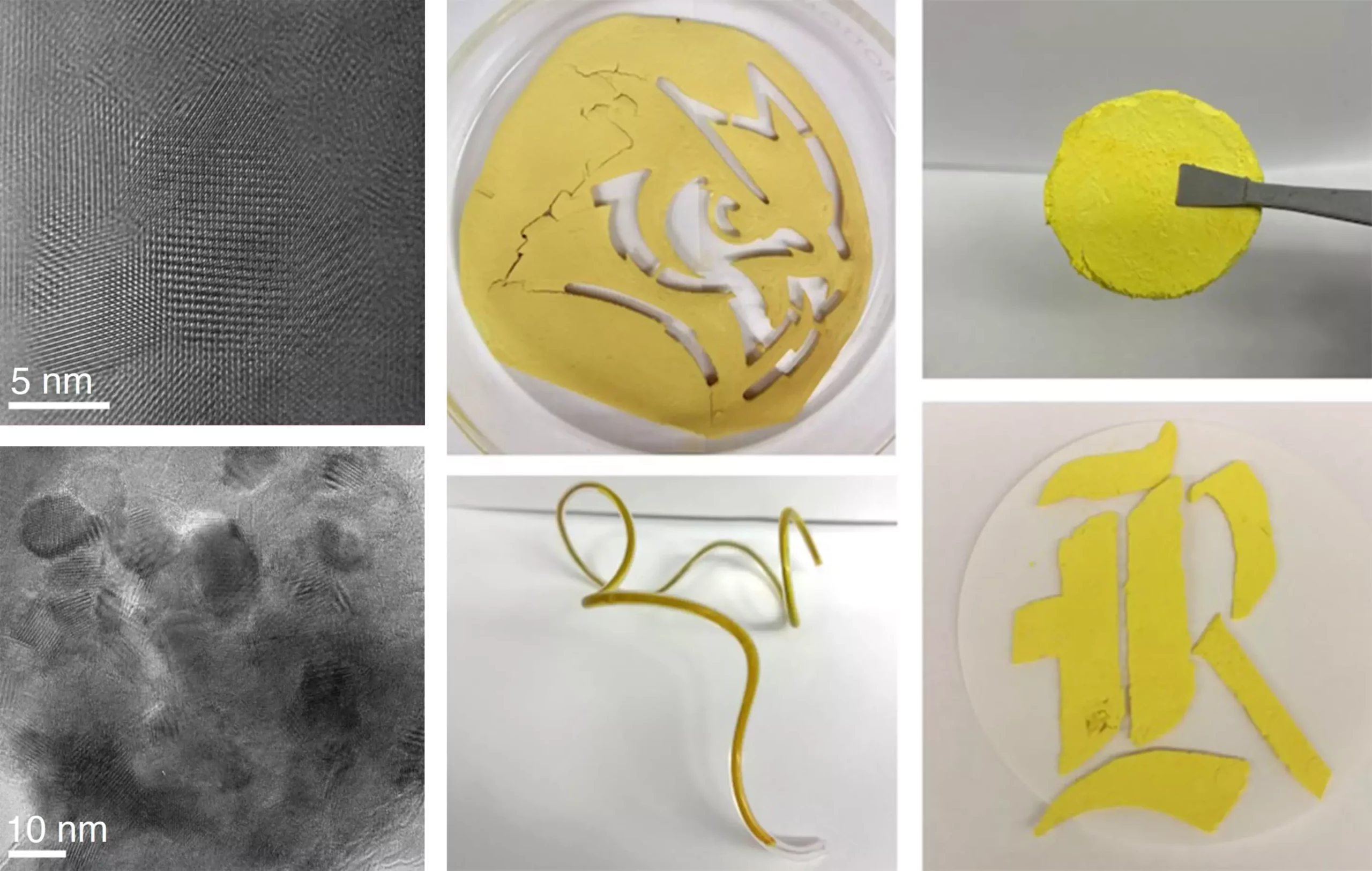Covalent organic frameworks (COFs) represent a paradigm shift in materials science, combining high porosity with tunable structures to create versatile platforms for applications ranging from gas capture to environmental remediation. COFs are crystalline materials consisting of repeating molecular units that construct microscopic networks, providing substantial surface areas ideal for filtering and trapping unwanted substances, including hazardous “forever chemicals” like per- and polyfluoroalkyl substances (PFAS). Innovations in their synthesis are crucial, as these materials promise significant advancements in addressing pressing environmental challenges such as energy storage and pollution control.
Recent developments from engineers at Rice University focus on a novel manufacturing method that enhances the production of COFs, making the process more efficient, cost-effective, and scalable. In a study published in the journal ACS Applied Materials and Interfaces, led by chemical engineer Rafael Verduzco, the team detailed an improved approach to synthesize high-quality COFs using a multiflow microreactor setup. This continual flow system acts like a miniaturized factory on a lab bench, where the reactants are mixed and processed in a steady stream rather than in sporadic, bulk operations. This innovative shift promises to reduce production times drastically while improving the quality and variety of the resulting COFs.
Khalil and Verduzco’s method can be likened to custom baking cookies rather than preparing a large batch at once. This comparison emphasizes not just the customization and control afforded by continuous synthesis but also underscores the potential for high-throughput production. By tightly managing reaction conditions—such as temperature and reactant concentration—researchers can consistently achieve superior crystallinity in COFs. Such continuous methods stand in marked contrast to traditional synthesis techniques, which typically require rigorous conditions like elevated temperatures and high pressures, often using toxic organic solvents that can hinder the practical deployment of COFs in real-world scenarios.
A landmark finding from the recent study is that one of the COFs synthesized via this new method exhibited remarkable effectiveness at degrading perfluorooctanoic acid (PFOA), a well-known PFAS compound associated with serious health threats, including cancer. The process of photocatalytic degradation, utilized here, is activated by light and takes place at ambient temperatures, starkly contrasting with many conventional techniques requiring much harsher conditions. This breakthrough highlights the significant potential COFs have in becoming vital tools in environmental cleanup efforts, offering a promising avenue for addressing the persistent challenges posed by PFAS contamination.
The implications of this breakthrough synthesis method extend beyond COFs alone; the principles of continuous flow technology can potentially be adapted to produce a wide spectrum of advanced materials in a more efficient manner. By reducing energy consumption and improving the quality control of synthesized products, researchers hope to spur discoveries in COF formulations that could drive innovations in fields such as drug delivery, sensing, and semiconductor applications. Furthermore, as the world wrestles with increasingly complex environmental challenges, the ability to produce COFs more abundantly and effectively could usher in a new era of technological advancements in contaminant removal technologies.
The Rice University team’s contributions to COF synthesis mark a significant stride forward in material science and environmental engineering. As these researchers demonstrate a breathtaking combination of innovation and scientific insight, their work not only brings high-quality COF production within reach but also offers novel solutions to critical environmental issues. Their findings stand as a call to the scientific community to explore these advancements further, leveraging such breakthroughs to develop new methods that can sustainably confront the challenges of toxic waste and environmental pollution, ultimately leading to a cleaner and safer world.

